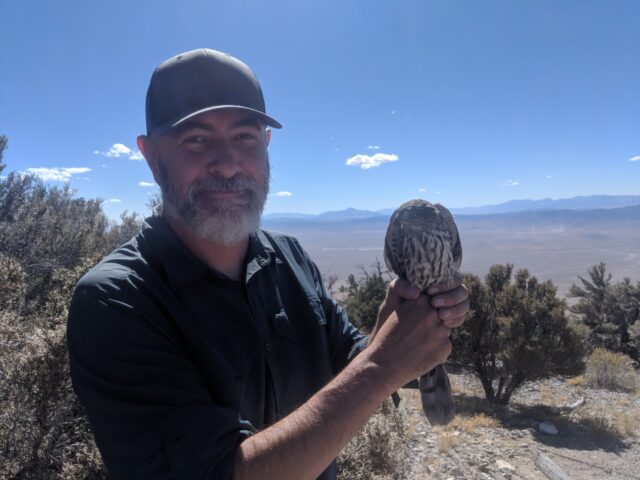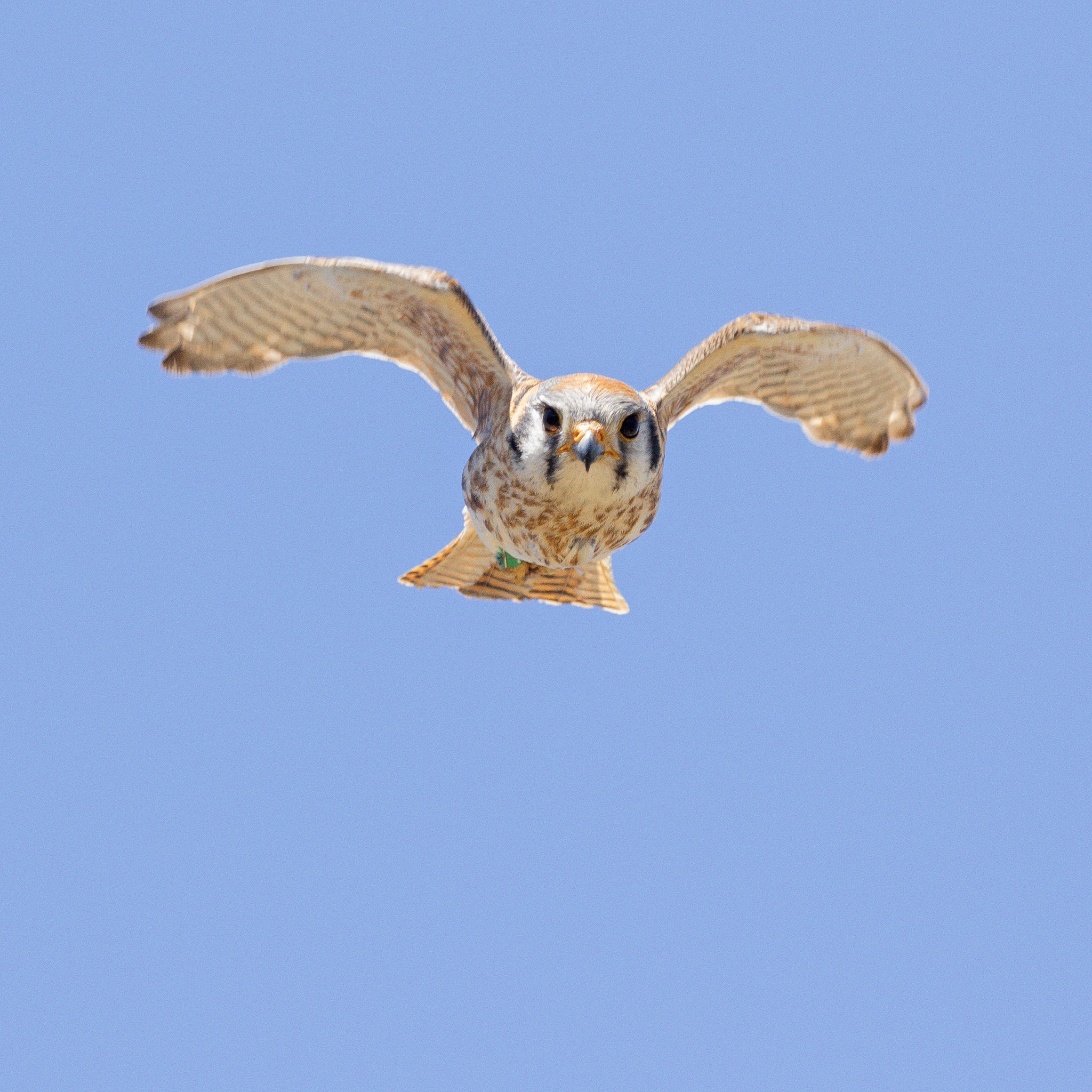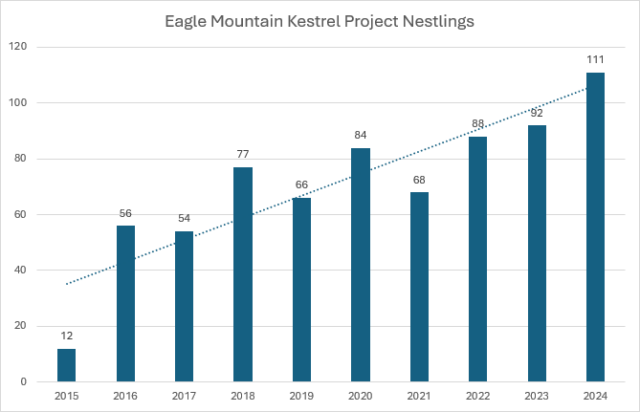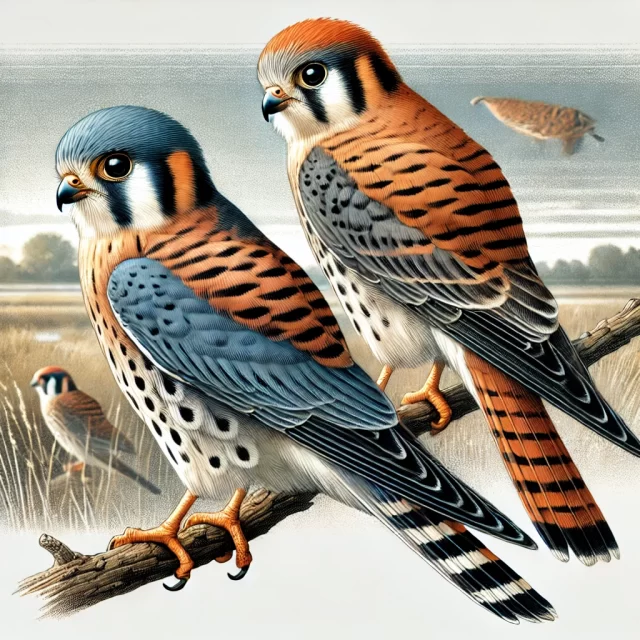The Eagle Mountain Kestrel Project is a citizen-science initiative dedicated to the conservation of American Kestrels in Eagle Mountain, Utah. It was founded in 2015 and has been highly successful in providing artificial nesting sites for these small falcons. The project has been supported by the community including Cedar Valley Sentinel, EM City, Mayor(s) and City Council(s), EM Public Library, EM Nature and Wildlife Alliance, private donors, landowners, and over a hundred volunteers over the years. The project has installed over 30 nest boxes, with an impressive average occupancy rate of 75%, leading to approximately 75 new kestrel fledglings each year.
Shon Reed is a key figure in the project, who has been instrumental in its development. The initiative has received support from the local government, with former and current city officials assisting in site selection and installation. The project is also partnered with HawkWatch International (HWI), further strengthening its conservation efforts. HWI had the following to say about the project. “Data from nesting attempts in Eagle Mountain and from individuals marked and tracked in Eagle Mountain by HWI biologists are big components of HWI’s long-term research efforts to understand kestrel populations in the west.”

HWI operates a network of raptor migration monitoring sites across the western United States, including in Utah, Nevada, New Mexico, and other states. Researchers and volunteers at these sites track raptor populations, band birds for scientific study, and contribute data to global conservation efforts. The organization also works on understanding threats to raptors, such as habitat loss and environmental contaminants.
The Eagle Mountain Kestrel Project is not just about nest boxes—it also includes live-streaming KestrelCams, allowing people to observe these birds in real time. The KestrelCam has seen several upgrades in hardware and support over the last few years. This year the camera outside of the nest box has been upgraded to provide a higher quality of video.
Live Video Stream
In addition, the project aligns with broader conservation goals in Eagle Mountain, such as preserving open spaces and implementing ordinances to protect natural habitats.
From 2015 to the end of the 2024 season, the project has counted and monitored 708 nestlings.
For more details, visit the project’s page: Eagle Mountain Kestrel Project
About the American Kestrel
The American Kestrel (Falco sparverius) is the smallest and most common falcon in North America. Despite its small size, it is a fierce and highly skilled hunter, often seen perched on telephone wires or hovering over fields in search of prey.
Physical Characteristics:
- Size: 9–12 inches (23–31 cm) in length with a wingspan of 20–24 inches (51–61 cm).
- Weight: 2.8–5.8 ounces (80–165 g).
- Coloration:
- Males have blue-gray wings, a rusty-orange back, and black barring on their tails.
- Females are slightly larger with rusty-colored wings and back with more extensive barring.
- Both sexes have distinct black facial markings resembling “mustaches.”
Habitat and Range:
- Found across North and South America, from Canada to Argentina.
- Prefers open areas such as grasslands, deserts, meadows, and agricultural fields.
- Adapts well to urban and suburban environments.
Diet and Hunting:
- Primarily feeds on insects, small rodents, birds, and reptiles.
- Hunts using a combination of hovering and perching techniques, striking quickly with sharp talons.
- Known for its incredible agility and ability to detect prey with sharp vision.
Behavior and Reproduction:
- Breeding Season: Typically from March to July.
- Nesting: Prefers cavities in trees, cliffs, and even nest boxes.
- Clutch Size: 3–7 eggs, incubated for about 29–31 days.
- Fledging: Chicks leave the nest after about 4 weeks.
- Monogamous pairs often return to the same nesting sites year after year.
Conservation Status:
- Listed as Least Concern by the IUCN, but populations are declining in some areas due to habitat loss, pesticide use, and competition for nesting sites.
- Conservation efforts include nest box programs and habitat restoration.
Fun Facts:
- Sometimes called the “Sparrow Hawk” due to its small size and predation of small birds.
- One of the few raptors that can hover in place while scanning for prey.
- Uses its tail as a rudder for stability while hovering.
- Unlike many raptors, kestrels show clear sexual dimorphism in their coloration.
Feature Photo: Shon Reed (2024)
Live Stream Links:
- https://emkp.life/ for desktop
- https://emkp.life/mobile/ for mobile
Mike Kieffer – Editor-in-Chief, Cedar Valley Sentinel
Mike Kieffer is a dynamic leader and community advocate based in Eagle Mountain, Utah. He serves as the Editor-in-Chief of the Cedar Valley Sentinel, a local publication dedicated to informing, inspiring, and elevating the Cedar Valley community through honest and accurate journalism. With a passion for fostering connections, Kieffer has made it his mission to highlight local businesses, provide reliable news, and support community development.
Beyond his editorial role, Kieffer is the owner of Lake Mountain Media, LLC, a company specializing in media and communications, and the co-owner of Quail Run Farms, which focuses on sustainable farming and community engagement. He also actively contributes to the local economy and culture as a member of the Eagle Mountain Chamber of Commerce.
Kieffer’s dedication extends to preserving and promoting the history and heritage of the Cedar Valley area. He often participates in community-centered events and media, including podcasts that explore the unique aspects of life in the region. Through his varied endeavors, he remains a steadfast advocate for the growth and enrichment of the local community.



